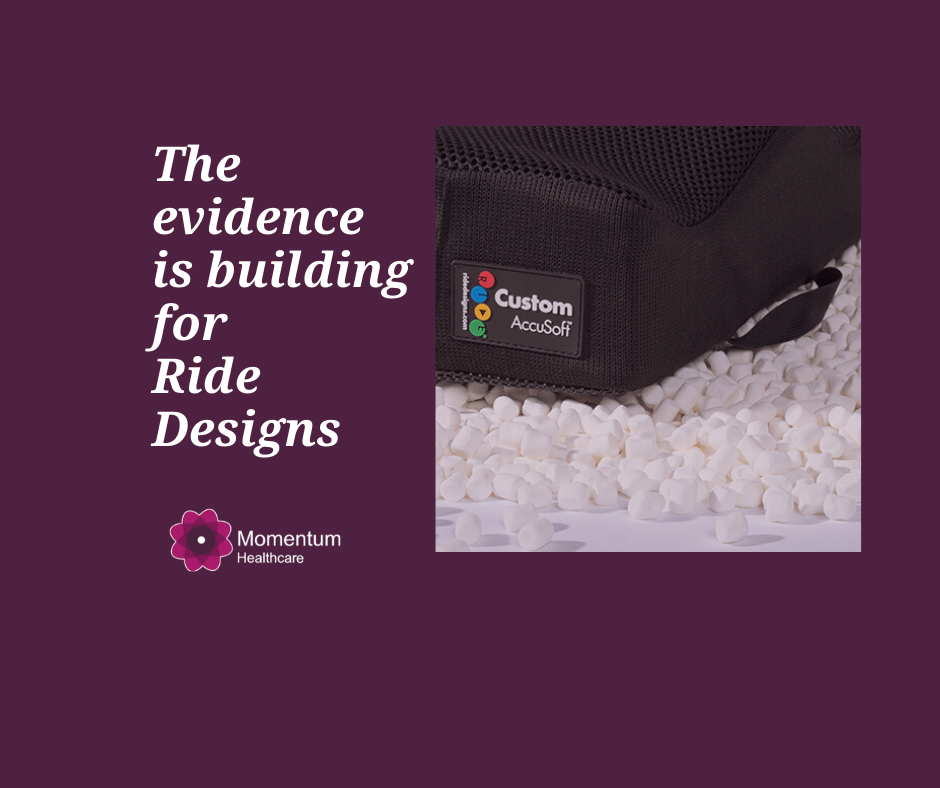The evidence is building!
Even though medical advances have led to increased life expectancy for people with severe disabilities, secondary functional and health conditions can often significantly hinder quality of life. A growing body of research supports the consideration of alternatives to traditional wheelchair cushion materials and design (immersion/envelopment).
Ride Designs takes a potentially more effective approach (orthotic and prosthetic) to address postural care, mobility, and skin protection. We support university-level, ongoing research to inform best practices for wheelchair seating and mobility.
Explore the following recent studies…
Off-loading provides best case reduction in tissue deformation
First reported use of MRI to document the comparative capabilities of two cushions and the resultant tissue compression and ulceration risk.
- Comparison of tissue distortion on offloading cushions versus air cell cushions.
- Offloading cushion reduces compression at ischial tuberosities; no increase in compression inferior to acetabulum.
- Establishes method to better understand the effect of wheelchair cushions on tissue deformation in the pelvic region.
Read the study in the Journal of Tissue Viability.
Off-loading cushion reduces interface pressure
Demonstrates the effectiveness of the Ride approach to cushion design as compared to a traditional air floatation style wheelchair seat cushion. The Ride approach:
- Effectively reduces a known extrinsic risk factor for pressure injury (interface pressure) in the high-risk ischial tuberosity and sacral/coccygeal regions.
- Demonstrates superior performance in interface pressure management, even when incorporating subtle support to the ischial tuberosities (i.e. well inserts in the Java Cushion).
- Provides greater lateral stability for reach.
Read the study in the Archives of Physical Medicine and Rehabilitation.
What happens when you sit? Explaining seated buttocks
Outlines the comparative differences in deep tissue deformation (as measured through sitting MRI) on Ride versus a popular foam cushion and air floatation cushion. Describes:
- Role of tissue deformation in pressure injury development
- Differences in individual biomechanical risk
- Differences in deep tissue deformation on different cushion surfaces
- How different postures can alter tissue deformation
Read the paper(scroll to page 165) in the Syllabus of the 33rd International Seating Symposium.
3D anatomy and deformation of the seated buttocks
Describes the 3D anatomy and deformation of the buttocks during sitting as evaluated with sitting MRI studies. Presents conflicting findings as compared to computer generated modelling* of tissue deformation.
- In general, people do not sit on muscle, especially if disabled. Gluteal muscle displaces posterior and lateral to the ischial tuberosities.
- Tissue beneath the ischial tuberosities of individuals with SCI is predominantly composed of fat and connective tissue, suggesting that these tissues might be most vulnerable to injury.
Read the research in the Journal of Tissue Viability.
*Note: Questionable theoretical research, based primarily on computational modelling, supports the use of air-cell-based cushion for individuals with SCI. The results of this computational modelling are questionable because:
- People with SCI do not sit on muscle. This study suggests they do.
- Actual 3-D anatomic studies of people with SCI, as described in the cited studies above, demonstrate fundamentally different soft tissue deformation and body shape than that which is modelled in this study, thus bringing into question the validity of the theoretical compression, stress, and strain measures proposed.


